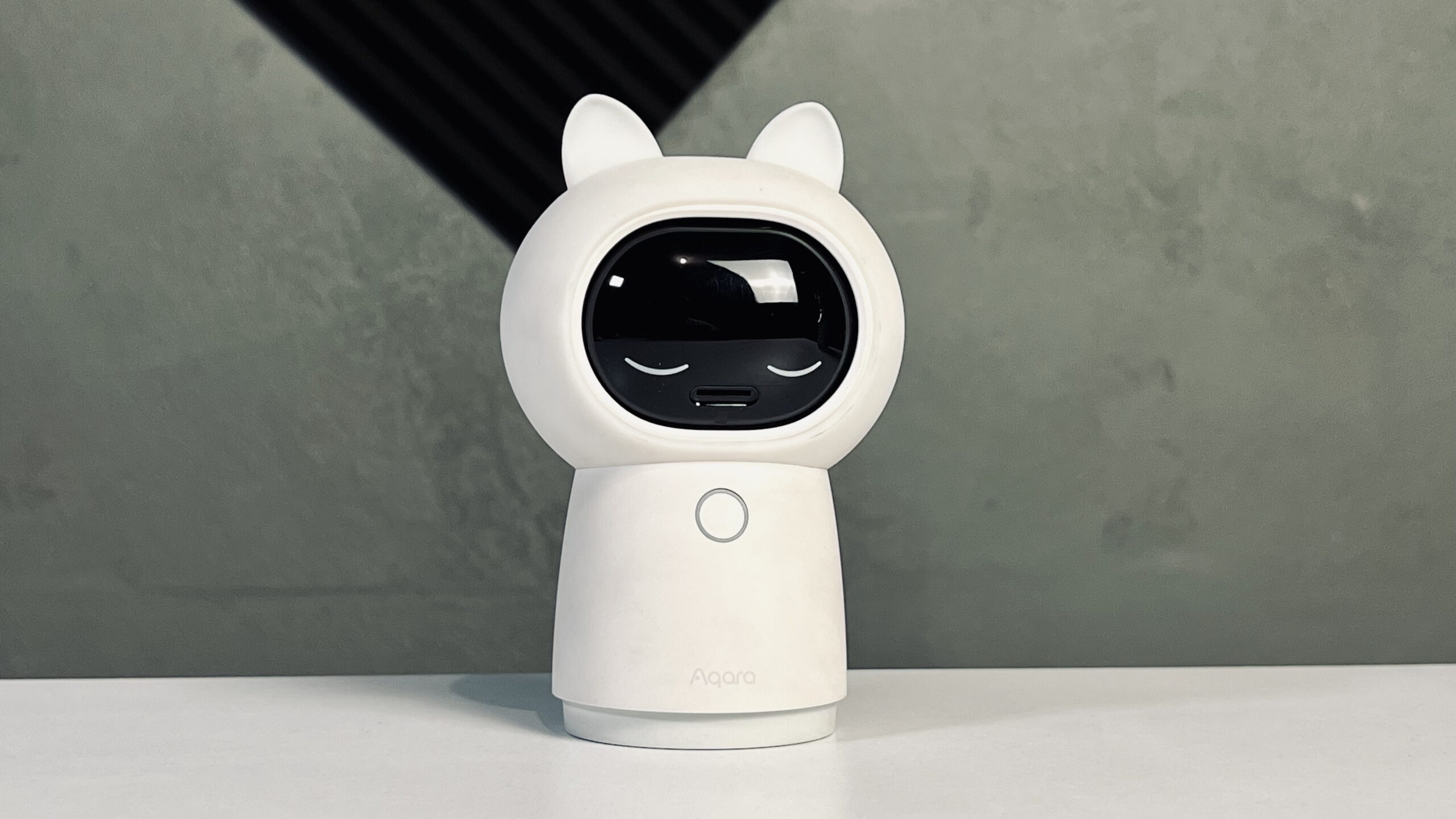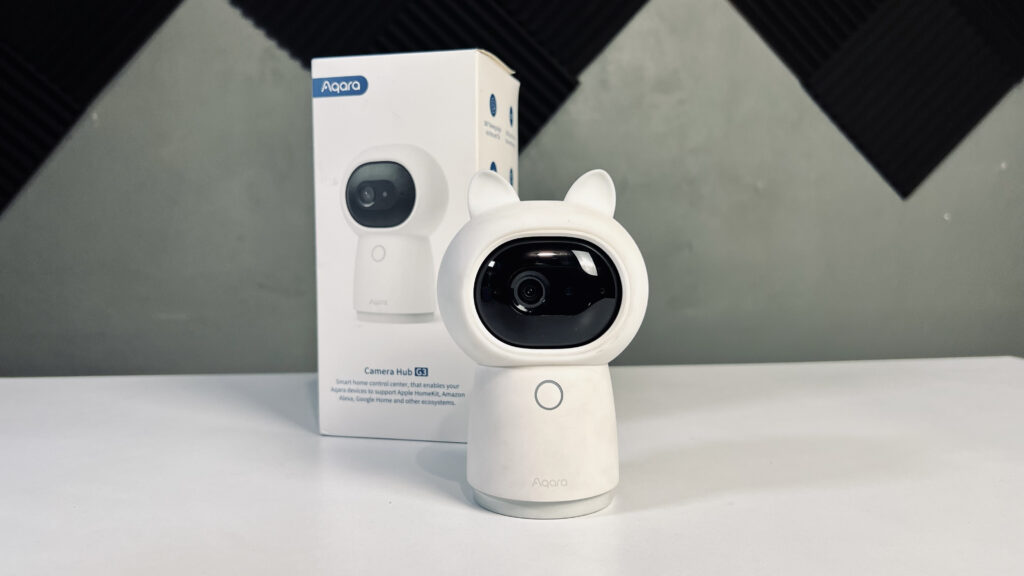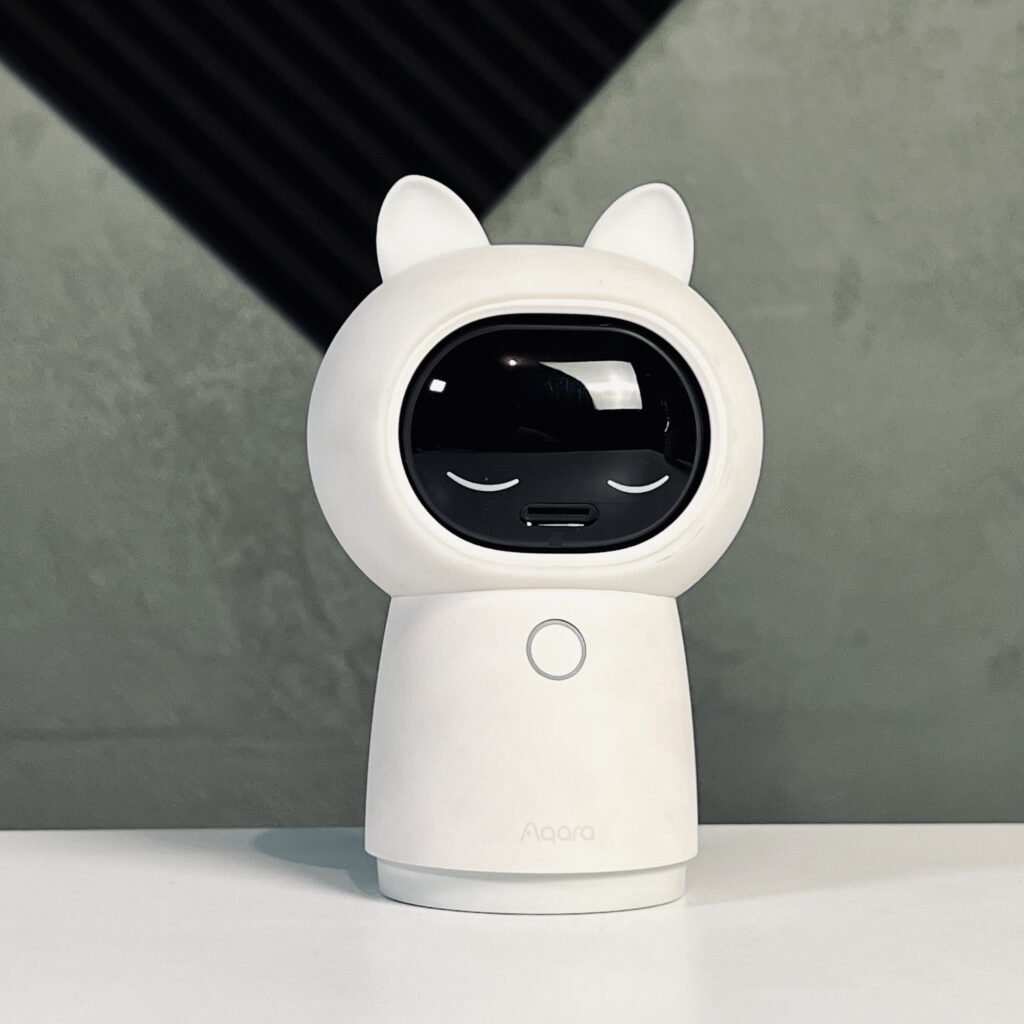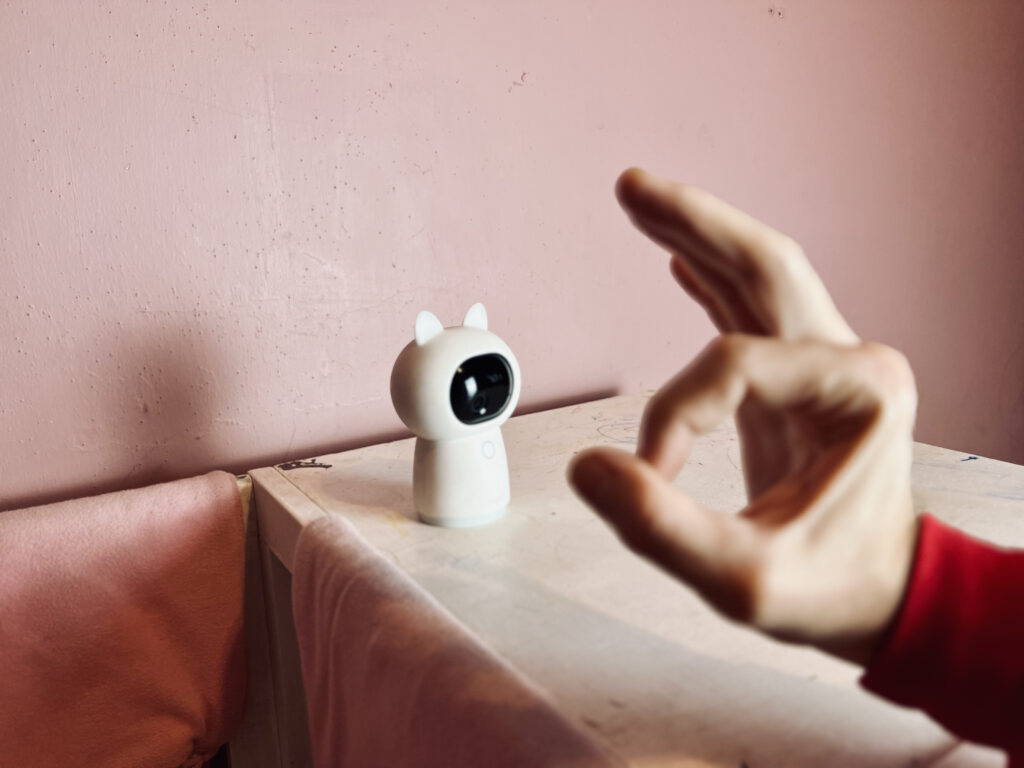In the smart home world, there are loads of devices that do one or two things and do them well. It’s far less common to come across a device that ticks multiple smart home categories and it’s even less common for that device to cover those bases well. When it happens though, that device becomes an essential part of your connected home and just might even be worthy of keeping an eye on the most precious parts of your life, your children. After months of testing, I can say that the Aqara G3 Camera Hub is such a device and essential in my own setup.
Aqara G3 Camera Hub Features
- 2K pan/tilt indoor camera
- Combined 110º lens and 340º rotation For a 360º viewing angle
- Zigbee 3.0 hub
- Facial and gesture recognition
- Smart Infrared controller
- Supports HomeKit Secure Video
- Two-way audio
- HomeKit security system & motion sensor
What You Need to Know Before You Buy
- Supports 2.4 and 5 gHz WiFi bands
- Connect up to 128 Aqara Zigbee child devices
- Limited to 1080p with HomeKit Secure Video
- Standard 1/4 20 thread for mounting
- USB-C power
- Included 5V power adapter
The Aqara G3 Does A LOT as a Smart Home Device
The G3 Camera Hub is a pretty unique device in the smart home space. Not only is it a smart camera, but it is also a security system, a Zigbee hub and an IR blaster, and it surprisingly plays all of these roles well.
The G3 as a Smart Camera
As an indoor security camera, the 2K resolution paired with a functional 360º viewing angle is fairly rare. On paper, the hardware stacks some impressive numbers, but it’s also strongly backed up by some incredible software features.
The G3 features some pretty powerful AI that is capable of not only recognizing humans and animals, but also continuously tracking them in frame thanks to its pan and tilt capabilities. While it may be slightly creepy for members of your household, it has the potential to catch intruders in the act helping you determine what exactly went down. However, where I see this being particularly useful is with keeping tabs on your furry friends and their secret lives.
It also has a “cruise” mode, which automatically pans between pre-selected points in the camera’s frame acting as a sort of smart home turret. While this is a great feature especially while you are out, it is limited to a 5-hour window. I honestly couldn’t personally find a use-case for this mode since we can manually control the pan and tilt of the camera while viewing it. I suppose it would be useful if you had an iPad displaying a live feed of the camera pulled up, but this sort of long-term live feed viewing hasn’t worked well for me in the past.
Taking the aforementioned AI a step further, this camera can recognize stored faces and use this detection to do all sorts of crazy stuff. As is the case with HomeKit Secure Video, we can elect to have a push notification sent letting us know that a certain person has been detected, but Aqara takes it a step further and integrates this recognition into automations. For example, if the camera recognizes you, you can have a specific lighting scene engage. If it recognizes your significant other, it can maybe turn on the projector via its IR blaster. Or if it recognizes you or your significant other, it can put itself into privacy mode.
Aqara didn’t stop with advanced facial recognition though, they integrated gesture detection too. When activated, you can use 5 pre-determined hand gestures to trigger any actions that are available in the Aqara app like playing sounds, controlling Aqara devices, or anything else that you can think up.
It is worth noting that the G3 can only be in one of these modes at a time. You can switch between human tracking, pet tracking, cruise mode, face recognition mode, or gesture detection mode on the fly, but only one can be active at any given time. This is a bit of a downer, but understandable considering the probable compute power necessary for each of these modes.
I also want to point out that during my testing I found that though it won’t recognize faces or gestures from across the room, you really only have to be within 7 feet or so for the camera to pick these up.
The G3 as a Security System
The G3 camera’s human tracking, facial recognition, and cruise modes can definitely be considered in the security realm, but Wwithin the Aqara and Apple Home ecosystems, it is also considered a full-on security system.
It offers four different modes: home, away, night, and off. You can use various Aqara sensors like their door and window sensors, P1 motion sensors, and vibration sensor to trigger the hub’s alarm or play different sounds in these different modes depending on your needs.
Although it doesn’t have an LED like the Hub M1S nor is it as loud due to its physical constraints, its built-in siren maybe won’t stir up nosey neighbors, but it will certainly make an unwanted guest feel unwelcome. You can also have any other Aqara hub alarms sound whenever the G3’s siren is triggered for a more cacophonous effect.
The G3 for (nearly) Whole Home Automation
The G3 is a very strong HomeKit camera and a decent diY security system, but it also allows you to connect an ever-growing range of smart home sensors, switches, buttons, and even a pet feeder to your smart home without affecting your WiFi.
Acting as a Zigbee 3.0 hub, you can effectively connect up to 128 Aqara Zigbee child devices to the G3. This number may seem like overkill, but you’d be surprised just how fast you can outfit your abode with Aqara devices due to their versatility, variety, and affordability. It’s not unfathomable to think that you can add contact sensors to all your doors and windows, water leak sensors to all your sinks tubs, toilets, laundry, and water heaters, replace all your dumb switches with smart ones with accompanying motion sensors, add a ton of buttons everywhere, control all your blinds and curtains, and still have a little wiggle room for fun toys like The Cube.
While the G3 can support up to 128 child devices, you will need to have some mains-powered devices in there like their in-wall switches and smart plug in order to get to that higher capacity. The good news is that you’ll probably want to anyway since these devices also act as Zigbee range extenders for your hub.
The G3 Can Blast All Your IR Devices too!
Similar to their their Hub M2, the G3 also features an IR blaster that when paired with the Aqara Home app can allow you to add smart functionality to devices that are controlled via IR remotes. You might not have a lot of these in your home, but some usual suspects are televisions, air conditioning units, and fans.
This is actually an incredible value considering something like the Sensibo Air which smartens your air conditioners and heat pumps via IR costs more than the G3 and doesn’t have all of the other smart home features of the G3. Though the user interface with these specific type of appliances isn’t nearly as refined in the Aqara Home app as with Sensibo, you can absolutely map all of the buttons on your IR remote to a virtual one with the G3.
Another downside of the IR blaster in the G3 is that connected appliances are not exposed to HomeKit. You are able to create some complex automations through the Aqara Home app, but there is no native Apple Home support. You can get around this more or less by creating a scene with the IR action in Aqara Home that is trigger when a spare Aqara light switch or smart plug is turned on and then in turn control that switch or plug in HomeKit. It definitely works and it’s definitely clunky and does have the added expense of
Is It Worthy of Watching My Kid?
Privacy is #1 Priority
As a parent, you are probably at least nominally concerned about the ability of creeps to hack into a camera that is charged with pointing directly at your children. This is an area in which you can rest at ease with the Aqara G3.
First, it has a straight up privacy mode that engages a lens cover. While it is super cute that they added the detail of the little sleepy eyes to the cover, this is a lot more than the majority of other manufacturers do when it comes to obscuring the camera’s view. This privacy mode corresponds to the ‘Off’ setting in HomeKit Secure Video and can quickly be toggled in the main camera view of the Aqara Home app. Though there is no “physical” means of engaging it, you can gently push up on the camera lens to rotate it into position. It feels a little unnatural and I would have preferred a triple or quintule press on the camera’s button to set this mode. It can also be automated through the Aqara Home app if you’ve actually managed to schedule and maintain your baby’s sleep times which you haven’t.
Capture Those Precious Moments
From the moment you heard you had a bun in the oven, you’ve likely been filling up your camera roll more than usual. The Aqara G3 can keep this going on a number of fronts.
First, you can quickly snap a picture from the live view which is nice because your little bundle of joy will be doing the cutest things known to man while they nap.
There are also a number of ways to automate recordings whether through HSV or through the Aqara Home appp or you can just opt for 24-hour recording via micro-SD and pick and choose those moments to share.
Facial recognition and cruise mode are great on the G3, but as a new parent you’re probably better off with gesture mode. It will allow you to trigger scenes and automations based on 5 different hand gestures that the camera can pick out. Granted, these automations do need to include other Aqara devices and you will need to be somewhat close to the lens to make the magic happen, these hand gestures are the next best thing to a physical button to draw curtains, shut off the lights, and play some white noise.
The G3 has a 2K resolution which on paper should provide you with more detail and clarity when zoomed thanks to a higher pixel density. But as a blind guy, this area is probably better left to others to analyze. What I can say about it is that thanks to the 110º lens paired with 340º pan, you have a functional 360º viewing angle. This will come in handy because you will be paranoid of every little sound you may hear or hallucinate and you’ll want to be able to quickly scan the room.
As your pride and joy begins to squirm more and more, they’ll start to get more and more curious, and probably about that weird little cat-looking thing that’s always pointed in their direction when they wake up. Thankfully, Aqara included a 1/4’ 20 thread screw hole on the base for mounting to a huge number of third-party booms and arms that will help you keep the camera close, but out of reach.
Speaking of that weird cat-looking thing, the removable ears and sleepy face on the lens cover are just plain cute. You of course can spruce these up to your liking and there are probably some Etsy makers out there with some brilliant 3D printed costumes, but the basic ones included by Aqara might just suffice.
Using the G3 with Apple Home
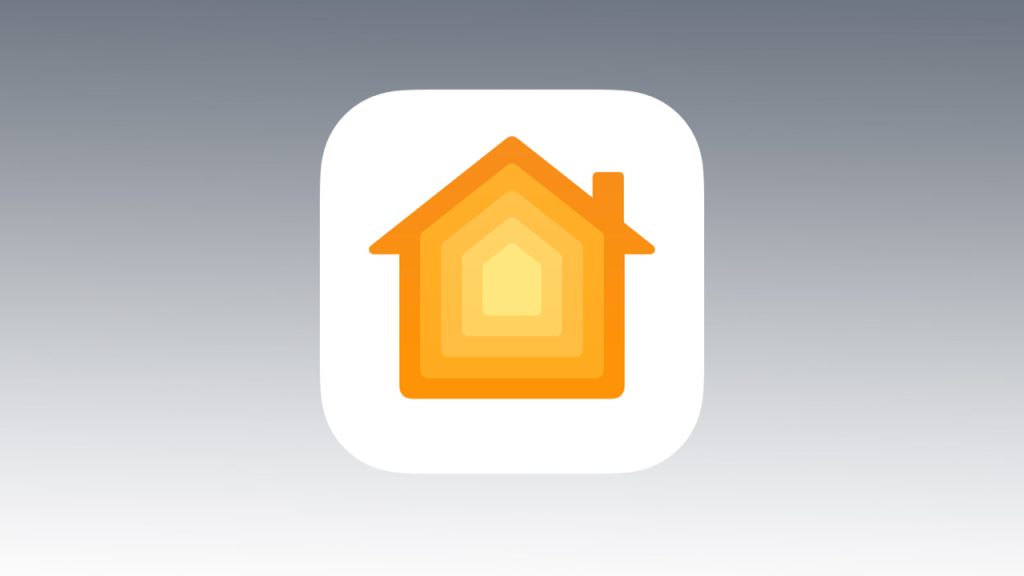
The G3 functions in 3 ways in HomeKit: a bridge, security system, and HomeKit Secure Video camera with the last two presenting as accessory tiles in the Apple Home app.
As a bridge in HomeKit, the G3 will expose most of the Aqara Zigbee devices you have connected through it. I say most because there are a couple of devices, namely the Pet feeder C1, that are not supported. The accessories that are exposed to HomeKit function in the exact same way as any WiFi, Threadd, or Bluetooth counterparts being able to be controlled and included in scenes and automations. I want to emphasize again that any IR-based accessories that you have connected to the G3 will not be exposed to HomeKit at this point. This is not a limitation of the G3, but rather a roadblock of the HomeKit framework.
As a security system, 4 modes are exposed: home, away, night, and off. These modes can be either manually trigger or automated. These modes correspond to the characteristics you have determined in the Aqara Home app. An unfortunate restriction of security systems in HomeKit is that they only use the sensors associated with the security system’s manufacturer. This means that only Aqara sensors can trigger the Aqara security system. Third-party door and window or motion sensors cannot be used to trigger the alarm. This being said, there is a workaround to employ non-Aqara HomeKit sensors to activate the alarm that works pretty well.
With everything HomeKit Secure Video has going for it with activity zones, facial ercognition, person, vehicle, animal, and package detection, and 10-day cloud storage for recordings, it, at least for now, has one major downside. Regardless of what the camera is capable of, through Apple Home the live stream and recordings max out at 1080p resolution. With many cameras nowadays bumping their specs this is a little disappointing and surely Apple will address this somewhat soon, but this is where we are with HSV. Thankfully you can circumvent the cloud altogether and record crispy 2K footage around the clock locally via micro-SD, but Apple needs to step up here.
While the G3 does a ton in Apple Home, the experiences are fairly stock due to the nature of the product categories themselves. Aqara have integrated everything they can within the constraints of the HomeKit framework.
The G3 in the Aqara Home app
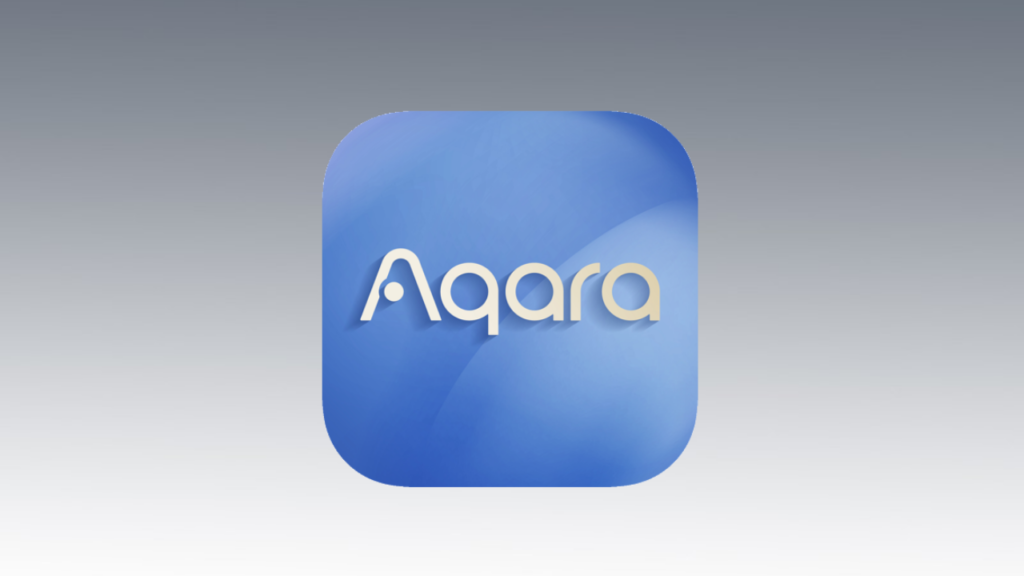
The G3 is Aqara’s flagship camera hub and it definitely does not disappoint on the shear amount of features it offers. Throughout this review we’ve covered a number of them so I won’t repeat them here, but there are some other areas that I haven’t explored.
We’ve talked quite a bit about the G3’s ability to record and store video, but adding an SD card unlocks a lot of the power of the G3. One of these being associated timeline events. When scrubbing through recorded video, you can choose to have any sensors’ events displayed on the timeline. This can give you potentially invaluable information about what might be going on not only in the room the G3 is in, but also elsewhere in your home which could be crucial when trying to figure out what happened while you were away.
There are a lot of adjustments that you can tinker with in the device’s settings. A couple of these to note are the camera’s positioning either rightside up or upside down. You have control over the camera’s infrared night vision as well being always on or always off, or auto-switch which is set by default. You can also choose to add a timestamp to the recordings.
The last two settings I want to point out harken a bit back to its suitability as a smart baby monitor. The first is the ability to set a password to access the camera. The second one is the ability to receive alerts based on abnormal sounds. While this doesn’t seem to include babies crying, or at least my baby crying, it is a nice addition though a caveat here is that you will need to have an SD card installed.
How Accessible is the G3?
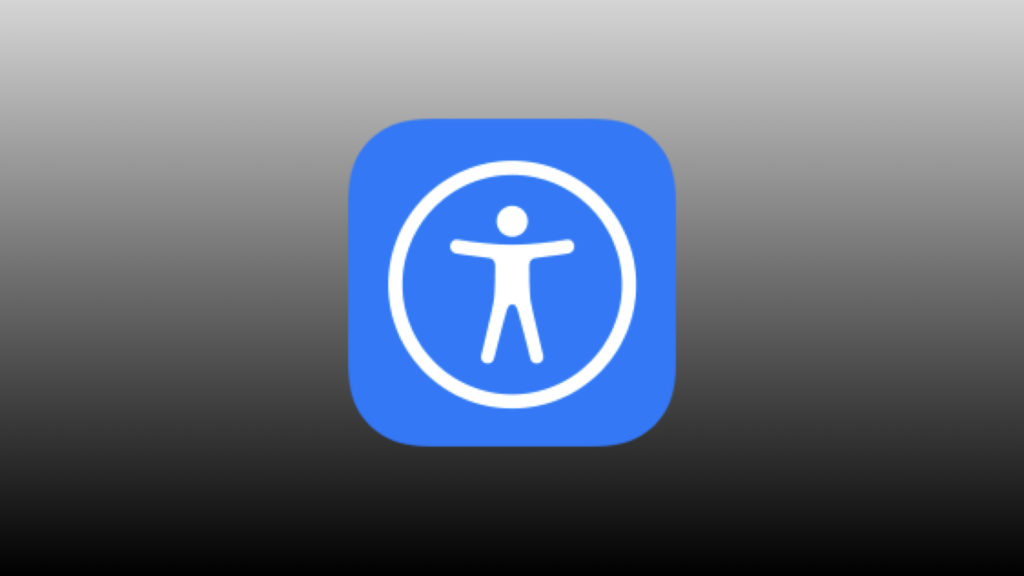
Physically speaking, there’s not a lot to speak about in terms of accessibility with the G3. I can say that physical features like the privacy shutter and child device pairing have software counterparts, so this is a definite accessibility winner. I’ll also note here that though there is an LED indicator and it will be used to signify different states of the camera, these indications are also largely backed up with voice prompts like in the case of initially setting up the device and adding child devices.
The software side of accessibility is a convoluted discussion when it comes to the G3. As you might expect and there are no smart cameras that I’m aware of that do, the camera’s feed does not provide audio descriptions, although this would be some really incredible use of AI. Most if not all standard app elements are properly indicated and you can navigate the interface fairly easily intuitively using VoiceOver.
The reason I say the experience was confusing is largely due to buttons that are labeled in odd ways often including extraneous information regarding their color and/or general purpose. For example, navigation buttons are usually located at the top of a screen or in a toolbar above the tab bar. Buttons like ‘back’ and ‘settings’ are labeled as ‘nav return white, back’ and ‘nav more white, more’. Screen reader users have sufficient information to properly navigate the different elements of the app, but the labels can be difficult to interpret and hinder efficiency. Similar difficulties are present in the G3’s camera’s main view with the button used to turn on Privacy mode being labeled as ’camera homepage tabbar sleep n’. Again, VoiceOver users can interact with this, but it takes quite a bit of trial and error to discover what actions these buttons perform. These hurdles, in my opinion, are due to an unfamiliarity with accessibility guidelines paired with a slight language barrier. Neither of which are too terribly intensive nor time-consuming to adjust and will improve the user experience for everyone.
Unfortunately, the controls that allow users to manipulate the pan and tilt functionality of the G3 are not accessible. This seems to be a custom control that has no accessibility considerations nor alternative ways of getting similar results.
Aside from these points, the G3’s software features, settings, and logs are surprisingly accessible with VoiceOver. This extends to other areas of the Aqara Home app like the automations and scenes tabs. Where it does not really apply is the ‘Home’ tab. There is a lot of information and customization that happens on this screen and unfortunately most of the elements suffer from similar issues of unnecessarily complex labels and inaccurate translations. While admittedly, I do not personally use the Aqara Home app as a dashboard, the ‘Home’ tab is where you configure the alarm modes and this is unfortunately an accessibility mess.
Final Thoughts
With the Arlo Baby being discontinued and with no other smart baby monitors in the Apple Home ecosystem, parents of young children wanting such a device have to consider standard HomeKit cameras. Looking at the current election of camera’s available, I do feel the G3 is not only a great choice, but no others can really compete with I as a HomeKit-compatible baby monitor. There are some that have comparable video quality and pan / tilt functionality, but lack the robust AI and security features of the G3. Smart home enthusiasts who maybe are less interested in using the G3 as a baby monitor have a lot to drool over with this device as well. While I am personally extremely selective when it comes to placing cameras inside my home, this one does so much that it can work really well in many areas and its privacy features make me pretty comfortable. For me, the G3 is as close to smart home hub indoor camera perfection as one might hope for and it definitely gets the myHomeKithome stamp of approval.
We use income-earning affiliate links.
We may receive a small commission on purchases made using links on this page at no extra cost to you.
